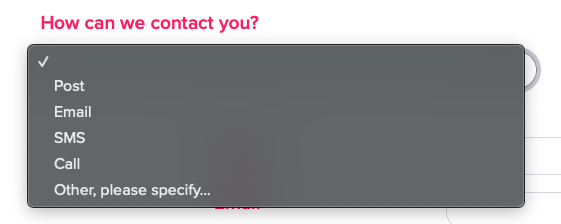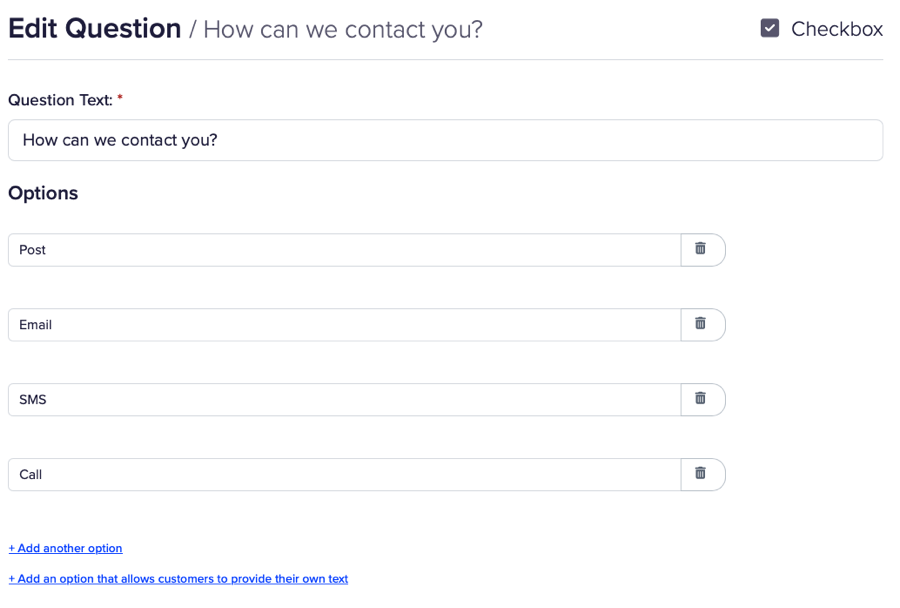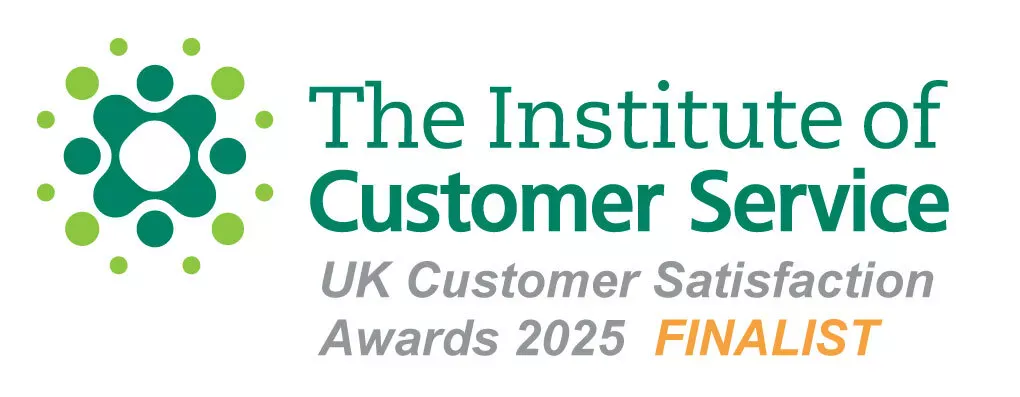Help Guides
Surveys
Reporting
Getting Responses
Managing Responses
All your questions in CustomerSure live in a central ‘question bank’. This means you can have the same question on multiple surveys.
Because questions are shared like this, some question settings affect all surveys, if it doesn’t make sense for that setting to change between surveys. For example, a question can’t measure NPS on survey A, and CSAT on survey B.
Most settings can be changed on each survey the question appears on, for example whether it’s a required question, or whether it has conditional logic applied.
Question Types
There are four main question types in CustomerSure, each serving a different purpose. Each type has different settings.
Rating Questions
Rating questions are how you collect satisfaction ratings from your customers. These ratings can be either on a numeric (i.e. 0 → 10) or textual (i.e. very dissatisfied → very satisfied) scale.

Rating questions have two core settings:
- Topics measured: Which topics in your reporting this question feeds into. Topics are things a customer can express a positive or negative sentiment on, for example ‘price’, ‘speed’, ‘cleanliness’, ‘safety’. A rating question can measure as many topics as you need it to.
- Metrics measured: Which CX metrics (i.e. CSAT, NPS) this question measures.
Rating questions have several per-survey settings:
- Mandatory: Should the question be mandatory on this survey?
- Show N/A: Should the question show a N/A label? Usually you don’t need this, a customer can simply skip the question, but some regulatory environments may ask for it. If you select this option, you can either accept the default option text of ‘N/A’ or provide your own.
- Display on one line: Mainly for creating matrix questions (see below), but can be used to achieve compact designs if your questions are short.
‘Matrix’-style questions
Matrix questions are a special way of displaying rating questions.
You don’t have to go through an extra step, like ‘add a matrix to this survey’, you just need to set up your existing questions correctly:
- First, change your questions from long sentences like “How would you rate our comfort?” to short phrases like “Comfort:”.
- Next, select the ‘display on one line’ option for each question you want to appear in the matrix.
- Finally, edit the first question in the matrix to have a header, for example “How would you rate our…”.

Comment Boxes
Comment boxes are your customers’ opportunity to tell you what they think.
If you have AI enabled on your account, we can automatically apply topics and labels by scanning the responses to a comment box.
In general, you’ll get higher response rates and easier-to-manage data if you have fewer comment boxes on a survey. For example, one comment box like “Tell us the reason for your scores” versus, “tell us about the food”, “tell us about call waiting times”, “tell us about our website”.
With one, simple comment box, the CustomerSure platform can do the heavy lifting of working out what customers are talking about, and customers aren’t put off completing your surveys by a long list of questions they aren’t interested in
Comment boxes have one core setting:
- Enable AI: IF your account has access to AI, opt this question in/out of AI processing.
And one per-survey setting:
- Mandatory: Should the question be mandatory on this survey?
Text fields
Text fields let your customers fill in fields such as their email address, name, phone number, or any custom fields which have meaning in your ERP/CRM systems.

The full list of fields which CustomerSure supports natively is:
- Email Address
- Name (Full name)
- First name
- Surname
- Telephone Number
- Company Name
- Address line 1
- Postcode
- Transaction reference number (advanced)
- Unique Person ID (advanced)
- Unique Company ID (advanced)
If you set fields correctly, their data will appear in the correct place in the CustomerSure interface, i.e. the customer’s name will show up in the ‘contact card’ which appears next to a survey completion.
Text fields have no core options, and two per-survey options:
- Mandatory: Should the question be mandatory on this survey?
- Display on one line: This is the default for field questions, as the labels are usually short (i.e. ‘name’/‘email’), but you can turn it off to display the label above the form field, if your label is unusually long.
Advanced text fields
In general you don’t want to add these three fields to a survey — they usually represent data which is internal to your systems and not usually known by customers.
However, to support flexible use-cases, if you know what you’re doing, you can add these fields. Our support team can always help with this.
Choice Questions
Choice questions let your customers pick something from a list.
To get the most value from choice questions, it’s important to understand 3 things:
- Choice questions vs Rating Questions
- Single choice vs multi choice
- Setting a segment vs simply ‘picking from a list’
Choices vs Ratings
To get high-quality VoC data, it’s important to understand the difference between choice questions and rating questions with a text scale (i.e very dissatisfied → very satisfied).
Text Rating Scales represent a scale with (no matter the words used) ‘bad’/‘dissatisfied’ at one end and ‘good’/‘satisfied’ at the other. If you could swap the text labels for a numeric scale like 0-10 or 1-5, and the question would still make sense, it’s a text rating scale.

Text rating scales are built in to the CustomerSure platform, and we provide ways to compare them in your reports with numeric rating scales.
Choice questions give customers the chance to pick ‘something’ from a list. They are useful for market research questions (i.e. ‘how did you hear about us?’), or setting segmentation data for your reports (i.e. ‘which site did you visit?’ will allow you to create per-site heatmaps and league tables).

Unlike text scales (which are built-in), You always create your own choice lists, and you can optionally give customers the opportunity to add their own choice which isn’t listed (i.e. “Other, please specify…”).
Single choice vs multi-choice.
Choice questions can give your customer a chance to select either one or multiple options.
If multiple choices are required, the customer will see checkboxes on your survey.

If a single choice is required, you have two choices. When your list of options is long (as a guide, more than 7), you should use a Dropdown, but for a short list of options you should use radio buttons.
Radio buttons have the advantage that the customer can see all the options at once, and make their choice with a single click/tap, wheras dropdowns have the advantage of being space-saving, at the cost of the customer having to make multiple clicks/taps to make their choice.
Radio Buttons

Dropdown menu

Segment-setting vs info-only
Choice questions can either set a segment for your reporting, or just give customers a chance to supply you with information.
If you pick a segment, you can either show all the options for this segment, or only a selection. Use this, for example, when you want to only show a few of your sites (instead of a full site list), or a few team members who are relevant to this survey’s touchpoint (intead of a full list of all your staff).
Learn more about setting up reporting segments.
If you decide your question is information-only, you can create a list of options.

You can optionally add an ‘Other, please specify’ option. This option will always appear last in your list of options, and if the customer selects it, a text field will appear, allowing them to supply a choice not in your list.
Change Question Order
To re-order questions, drag the left-hand icons up and down, and drop the question in its new location.
Remove a Question
To remove a question from a survey, select Options → Remove from survey.
The question will remain in your question bank if it appears on other surveys, but the answers it collected for this survey will be deleted.
You can not undo question deletion, so please be sure that you want to remove the historical answers.





